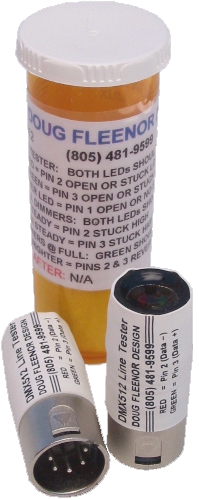thebeardedweiss
Member
Here's my situation:
For the past several years I have used Elation lights in various places around our theatre. I run the DMX from the lights to the nearest mic jack and then connect from the snake (which terminates in our booth) to the light board.
Simple, right? No problems for years.
Suddenly, the signal doesn't transfer through the aforementioned path. (Meaning, they don't respond to commands.) I know the path is good, because a microphone plugged in to the mic jacks and then into the sound board works just perfectly. I also know that the lights are good, because they respond perfectly when I run a cable directly from the board to the DMX jack on the first light in the sequence.
I could just run 150' worth of cable down the hallway and through the fly rail to the lights that are currently mounted over the stage, but my Artistic Director is not fond of that idea.
Has anyone dealt with this kind of situation before? I'm baffled.
I called Elation's tech support, but they weren't able to offer any assistance.
Thanks.
For the past several years I have used Elation lights in various places around our theatre. I run the DMX from the lights to the nearest mic jack and then connect from the snake (which terminates in our booth) to the light board.
Simple, right? No problems for years.
Suddenly, the signal doesn't transfer through the aforementioned path. (Meaning, they don't respond to commands.) I know the path is good, because a microphone plugged in to the mic jacks and then into the sound board works just perfectly. I also know that the lights are good, because they respond perfectly when I run a cable directly from the board to the DMX jack on the first light in the sequence.
I could just run 150' worth of cable down the hallway and through the fly rail to the lights that are currently mounted over the stage, but my Artistic Director is not fond of that idea.
Has anyone dealt with this kind of situation before? I'm baffled.
I called Elation's tech support, but they weren't able to offer any assistance.
Thanks.



